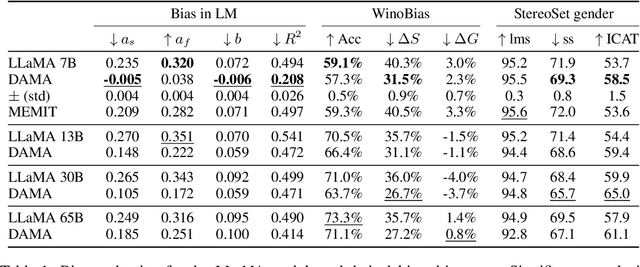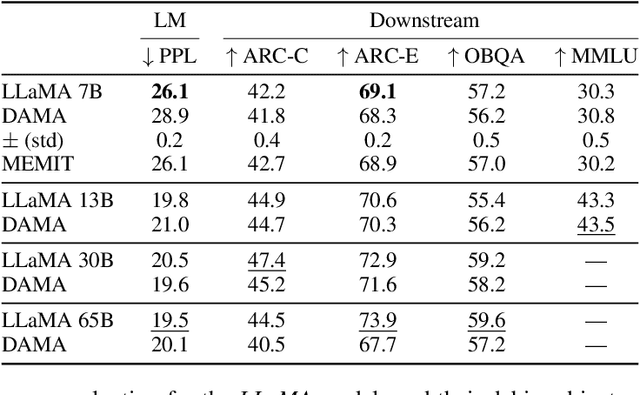Debiasing Algorithm through Model Adaptation
Paper and Code
Oct 29, 2023



Large language models are becoming the go-to solution for various language tasks. However, with growing capacity, models are prone to rely on spurious correlations stemming from biases and stereotypes present in the training data. This work proposes a novel method for detecting and mitigating gender bias in language models. We perform causal analysis to identify problematic model components and discover that mid-upper feed-forward layers are most prone to convey biases. Based on the analysis results, we adapt the model by multiplying these layers by a linear projection. Our titular method, DAMA, significantly decreases bias as measured by diverse metrics while maintaining the model's performance on downstream tasks. We release code for our method and models, which retrain LLaMA's state-of-the-art performance while being significantly less biased.
 Add to Chrome
Add to Chrome Add to Firefox
Add to Firefox Add to Edge
Add to Edge